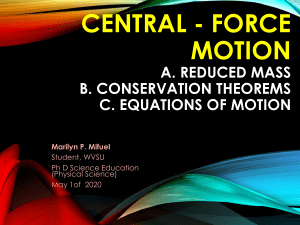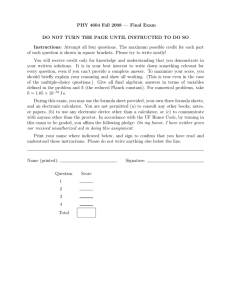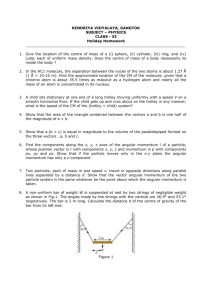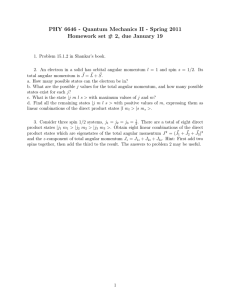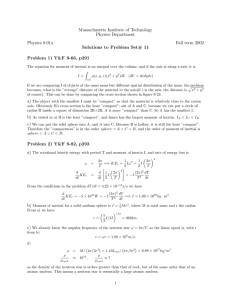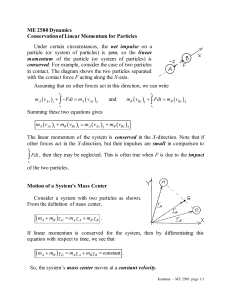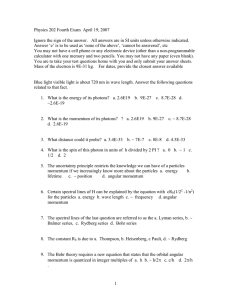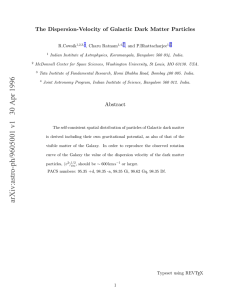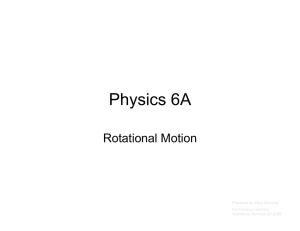Homework Assignment 1 Physics 302, Classical Mechanics Problems Fall, 2010
advertisement
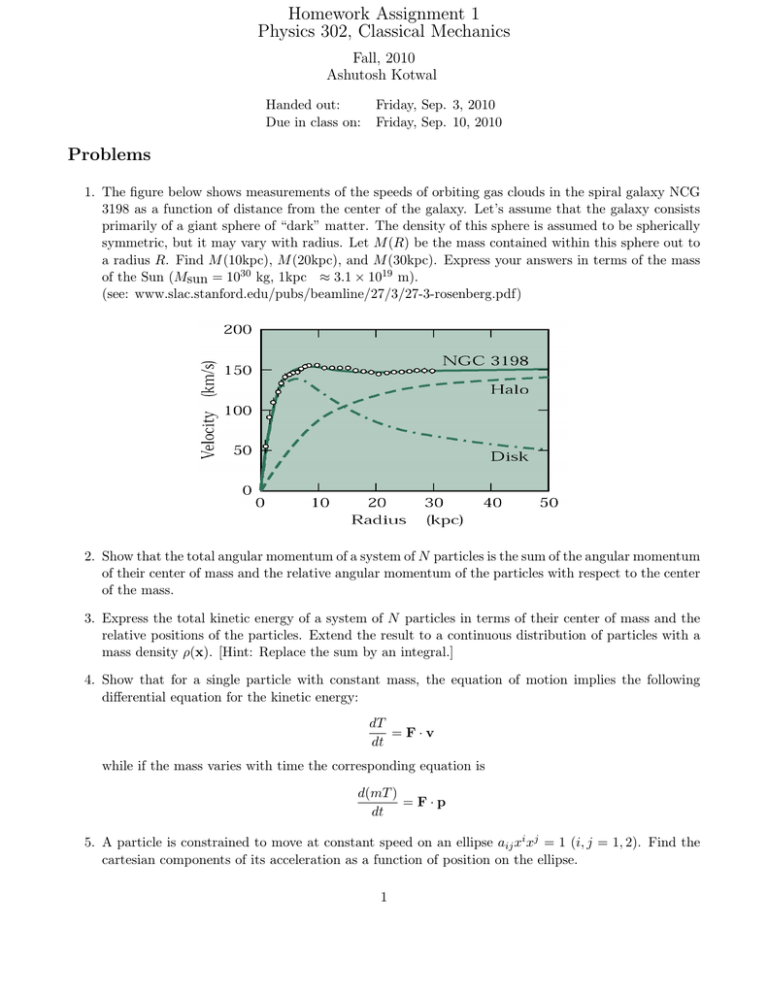
Homework Assignment 1 Physics 302, Classical Mechanics Fall, 2010 Ashutosh Kotwal Handed out: Due in class on: Friday, Sep. 3, 2010 Friday, Sep. 10, 2010 Problems 1. The figure below shows measurements of the speeds of orbiting gas clouds in the spiral galaxy NCG 3198 as a function of distance from the center of the galaxy. Let’s assume that the galaxy consists primarily of a giant sphere of “dark” matter. The density of this sphere is assumed to be spherically symmetric, but it may vary with radius. Let M (R) be the mass contained within this sphere out to a radius R. Find M (10kpc), M (20kpc), and M (30kpc). Express your answers in terms of the mass of the Sun (Msun = 1030 kg, 1kpc ≈ 3.1 × 1019 m). (see: www.slac.stanford.edu/pubs/beamline/27/3/27-3-rosenberg.pdf) 2. Show that the total angular momentum of a system of N particles is the sum of the angular momentum of their center of mass and the relative angular momentum of the particles with respect to the center of the mass. 3. Express the total kinetic energy of a system of N particles in terms of their center of mass and the relative positions of the particles. Extend the result to a continuous distribution of particles with a mass density ρ(x). [Hint: Replace the sum by an integral.] 4. Show that for a single particle with constant mass, the equation of motion implies the following differential equation for the kinetic energy: dT =F·v dt while if the mass varies with time the corresponding equation is d(mT ) =F·p dt 5. A particle is constrained to move at constant speed on an ellipse aij xi xj = 1 (i, j = 1, 2). Find the cartesian components of its acceleration as a function of position on the ellipse. 1 6. Consider the coordinate transformation yj = fj (xi , t) in two dimensions, and assume that the x and y coordinates are not both inertial but rotating with respect to each other: y1 = x1 cos ωt−x2 sin ωt and y2 = x1 sin ωt + x2 cos ωt. Show that in general even if the x acceleration vanishes, the y acceleration does not. Find ÿ for ẍ = 0, but ẋ 6= 0 and x 6= 0. Give the physical significance of the terms you obtain. 2
